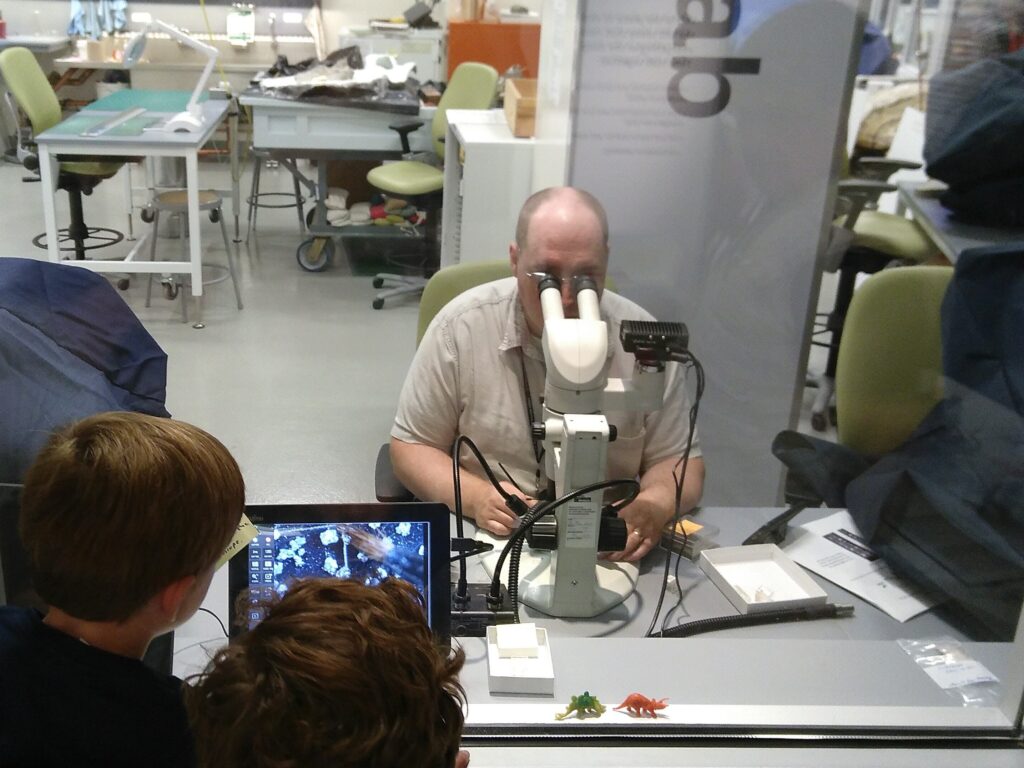Behind every museum display of ancient creatures and every scientific paper about prehistoric life lie countless hours of meticulous laboratory work. Fossil preparation—the process of extracting, cleaning, and preserving fossil specimens—forms the critical foundation upon which paleontological research is built. This often-overlooked aspect of paleontology requires equal parts scientific knowledge, artistic skill, and infinite patience. From the moment a fossil-bearing rock is collected in the field until it’s ready for scientific study, it undergoes a remarkable transformation in specialized laboratories staffed by highly trained technicians. This article provides an in-depth look at the fascinating world of fossil preparation, exploring the techniques, tools, and expertise required to unlock the secrets held within ancient bones.
From Field to Lab: The Journey Begins
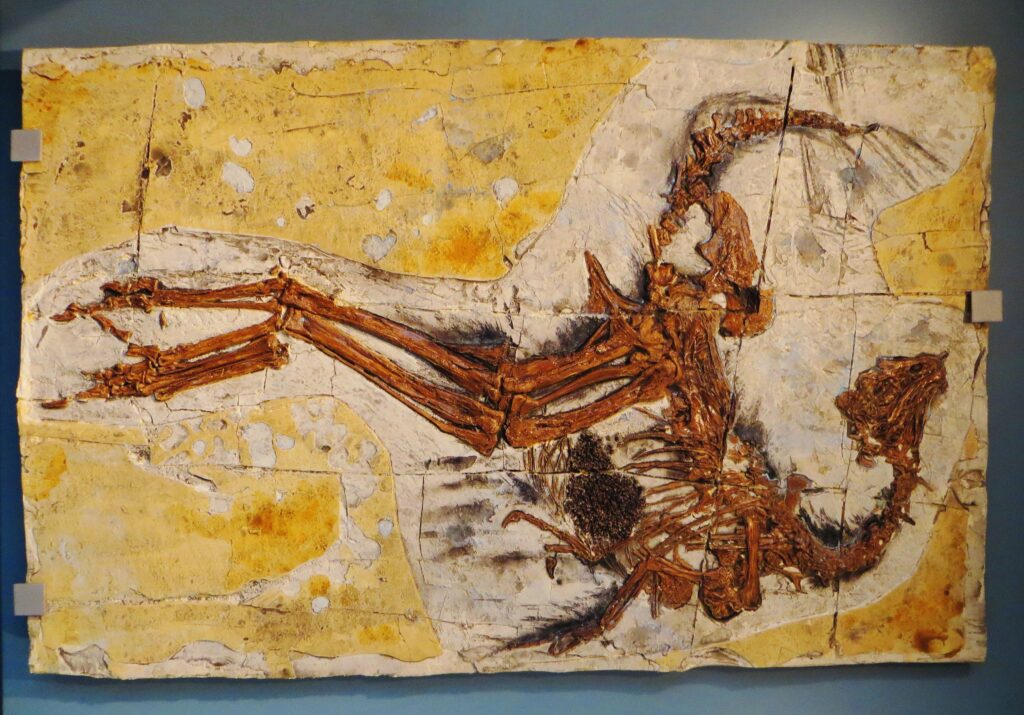
The preparation process begins long before a fossil reaches the laboratory. In the field, paleontologists carefully excavate fossils, often encasing them in protective jackets made of plaster and burlap. These field jackets protect delicate specimens during transportation to the preparation facility. The jacketing process involves first covering exposed bone with a separator layer, typically tissue paper or aluminum foil, to prevent the plaster from adhering directly to the fossil. Burlap strips soaked in plaster of Paris are then wrapped around the specimen, creating a rigid protective shell. Once the plaster hardens, the entire block containing the fossil can be safely removed from the ground. Field notes documenting the exact location and geological context accompany each specimen, providing crucial data for later research.
The Preparation Laboratory Environment

Fossil preparation labs are specialized environments designed to facilitate meticulous work while protecting both specimens and preparators. Modern labs feature powerful ventilation systems to remove potentially harmful dust particles generated during preparation. Work surfaces are typically sturdy and well-lit, with adjustable lighting systems that can be positioned to eliminate shadows. Microscopes and magnifying equipment allow preparators to see fine details that would be invisible to the naked eye. Storage facilities within the lab provide secure, climate-controlled environments for specimens at various stages of preparation. Most labs also maintain separate spaces for mechanical preparation, chemical preparation, and molding and casting work, as each process involves different tools and potential hazards.
Opening the Field Jacket: First Steps in the Lab

The preparation process officially begins with the careful opening of the field jacket, which is often documented through photography and notes. Preparators use handsaws, oscillating saws, or other cutting tools to carefully cut along the sides of the jacket, being extremely careful not to damage the fossil inside. Once the top of the jacket is removed, the preparator begins a thorough assessment of the specimen’s condition. This initial evaluation helps determine the appropriate preparation strategies based on factors such as fossil density, matrix hardness, and specimen fragility. The preparator documents the specimen’s condition through photographs and notes before any preparation work begins, creating a valuable record of the fossil’s original state. In many institutions, this is also when the specimen receives its official catalog number, which will follow it through preparation and into the collection.
Tools of the Trade: Equipment for Mechanical Preparation
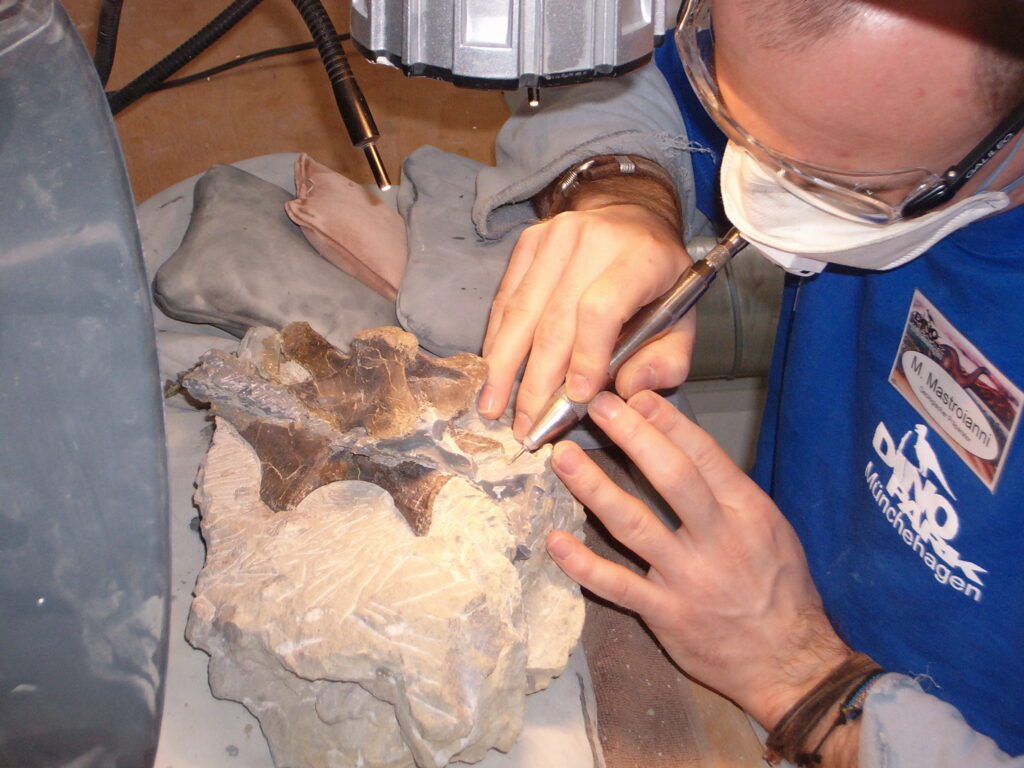
Fossil preparators employ an impressive array of tools, from pneumatic engravers to dental picks, each selected based on the specific requirements of the specimen. Air scribes—small pneumatic tools that act like miniature jackhammers—are workhorses in many preparation labs, allowing preparators to remove matrix (the rock surrounding a fossil) with precision and control. Dental picks, needles, and small brushes permit work in extremely delicate areas where even the vibration of pneumatic tools might damage fragile bone. For larger specimens or particularly hard matrix, preparators might use pneumatic or electric hammers and chisels, working gradually from the outer edges toward the specimen. Microscopes and magnification equipment are essential for seeing fine details, especially when working on small specimens or delicate structures. The modern preparator’s workstation often resembles a combination of dental office and sculptor’s studio, reflecting the blend of medical precision and artistic skill required.
Chemical Preparation Methods
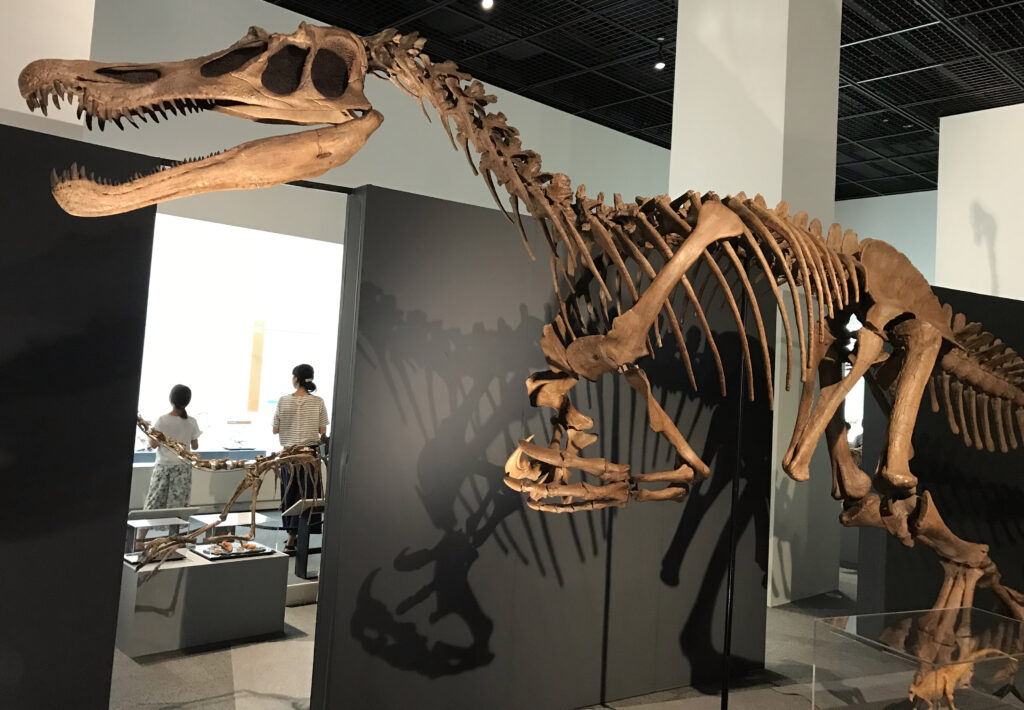
When mechanical methods prove too risky or inefficient, preparators turn to chemical techniques to free fossils from their surrounding matrix. Acid preparation involves immersing rock containing fossils in dilute acid solutions that dissolve the matrix while leaving the fossilized bone relatively untouched. This technique works particularly well when fossils are preserved in limestone matrices, as acetic or formic acid will dissolve the calcium carbonate of the rock while having minimal effect on the phosphatic material of the bones. Before acid preparation begins, exposed portions of the fossil are coated with protective substances such as polyvinyl acetate or polyvinyl butyral to prevent acid damage. The specimen undergoes repeated cycles of acid immersion followed by thorough rinsing and drying, with preparators checking progress after each cycle. Although slower than mechanical methods, chemical preparation can reveal exquisitely preserved details that might otherwise be destroyed by tools.
Conservation and Stabilization Techniques
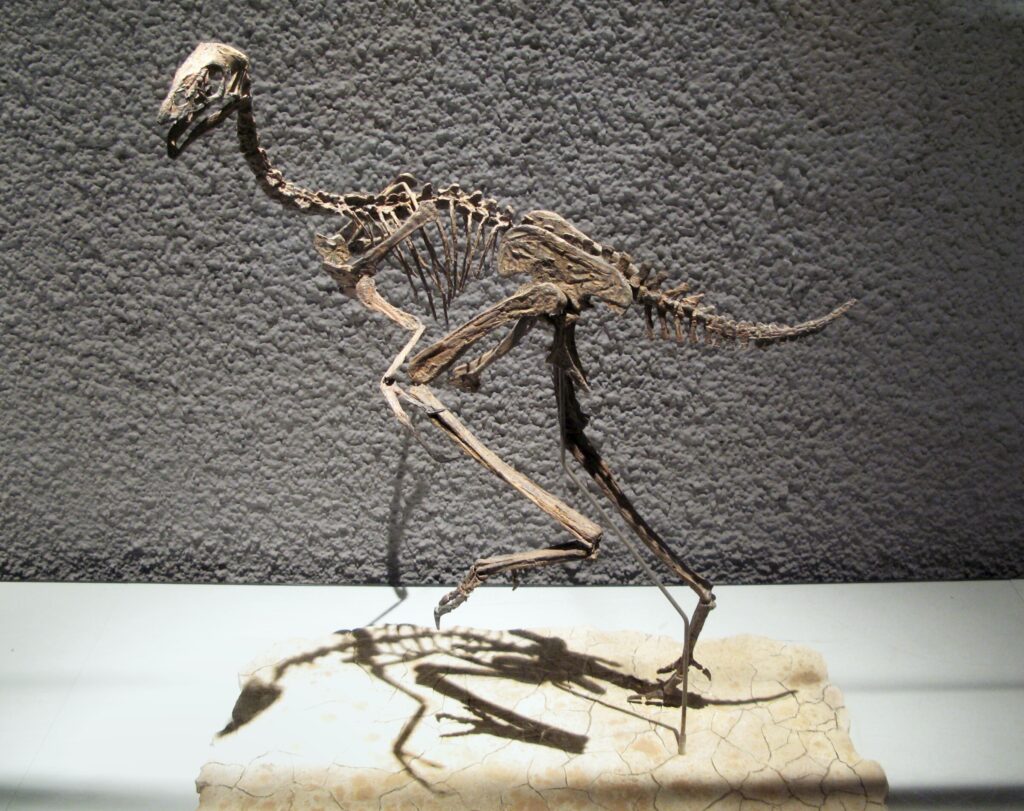
Preserving a fossil’s integrity throughout preparation and beyond requires specialized conservation techniques. Consolidants—hardening agents like polyvinyl acetate or Paraloid B-72—are applied to strengthen fragile fossil material before, during, and after preparation. For severely fractured specimens, preparators may employ temporary supports or even completely disassemble and then reassemble the fossil using reversible adhesives. Gaps or missing sections might be filled with specially formulated materials that can be distinguished from the original bone but provide structural support. Environmental factors like humidity and temperature are carefully controlled to prevent damage from expansion, contraction, or mineral growth. The guiding principle in fossil conservation is reversibility—ideally, any treatments applied should be removable in the future if better conservation methods are developed or if the treatment interferes with new analytical techniques.
Assembling Fragmentary Specimens

Many fossils are recovered as dozens or even hundreds of separate fragments that must be meticulously reassembled, creating a three-dimensional puzzle of immense complexity. Preparators begin by identifying and sorting fragments based on bone type, texture, and color, gradually determining which pieces connect to form larger elements. Specialized adhesives that bond well but remain removable if necessary are used to join the pieces. Temporary supports made of sand, foam, or custom-built armatures hold fragments in position while adhesives cure. For particularly complex assemblies, preparators may use 3D scanning and printing technologies to create models that help visualize how fragments should fit together. The reassembly process requires not only patience and steady hands but also a thorough understanding of comparative anatomy to correctly position fragments when portions of the specimen are missing.
Digital Documentation and 3D Scanning
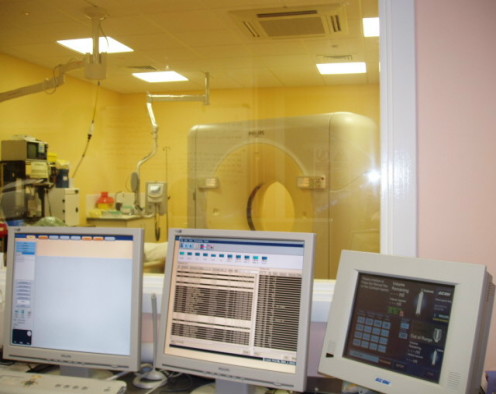
Modern fossil preparation increasingly incorporates digital technologies to document specimens throughout the preparation process. High-resolution photography creates a visual record of each stage of preparation, while photogrammetry and structured light scanning generate detailed 3D models that can be examined and measured without handling the actual specimen. These digital models serve multiple purposes beyond documentation, enabling researchers around the world to access specimens remotely. Digital models can also guide preparation decisions, as virtual removal of the matrix can be tested before attempting it on the actual fossil. CT scanning technology allows preparators to see inside matrix blocks before preparation begins, revealing the position and condition of enclosed fossils and helping plan the most effective preparation approach. These technological advances complement rather than replace traditional preparation skills, adding powerful new tools to the preparator’s repertoire.
Microfossil Preparation: Small Size, Big Challenges

Preparing microfossils—specimens measuring less than a millimeter to a few centimeters—presents unique challenges requiring specialized techniques. Screen washing involves gently disaggregating sediments containing microfossils by soaking and washing them through fine mesh screens, separating small fossils from surrounding sediment. Once isolated, these tiny specimens are often sorted under microscopes using fine brushes dipped in water or alcohol to move individual fossils into storage containers. For extremely delicate specimens, preparators may use specially designed microtools or even laser systems to remove matrix with extraordinary precision. Despite their small size, microfossils provide critical information about ancient ecosystems, often revealing details about smaller organisms that rarely preserve as larger specimens. The preparation of microfossils requires exceptional patience and steady hands, with some preparators developing techniques involving specialized breathing patterns to prevent accidental displacement of specimens during exhalation.
Quality Control and Scientific Accuracy
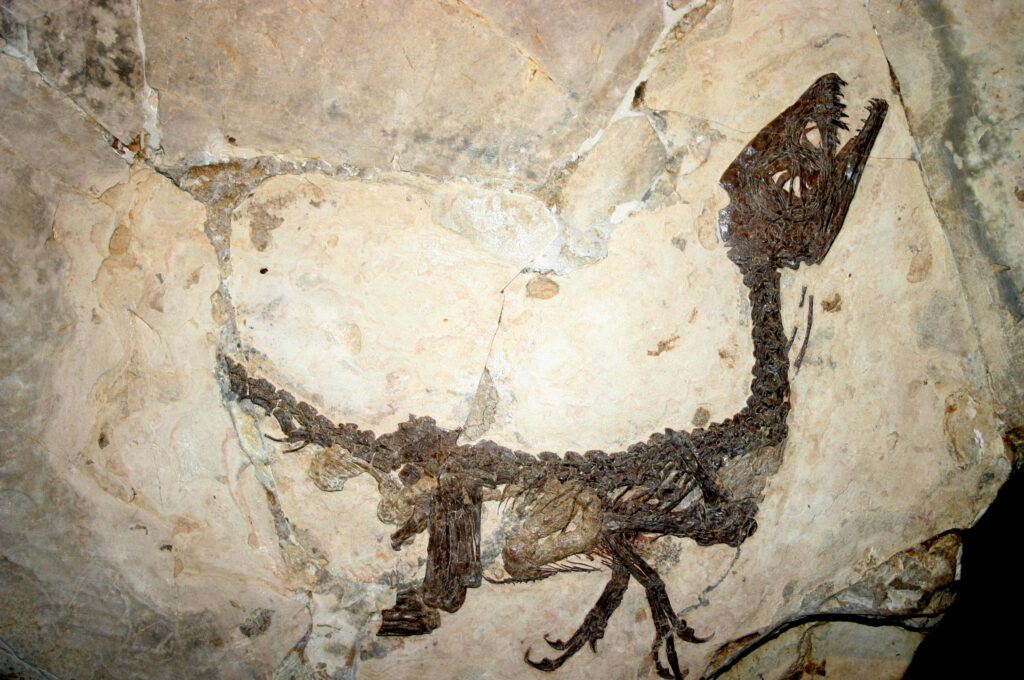
Throughout the preparation process, maintaining scientific integrity is paramount, requiring rigorous quality control measures. Preparators must constantly make judgment calls about how much matrix to remove and which features to expose, decisions requiring both technical skill and scientific knowledge. Regular consultations with research scientists help ensure that preparation work aligns with research objectives and preserves scientifically significant features. Detailed documentation, including photographs, notes, and records of all treatments applied to the specimen, creates an audit trail that future researchers can reference. Ethical preparation standards prohibit adding material or modifying specimens to make them appear more complete without clear documentation of such interventions. When reconstruction is necessary for structural stability or exhibition purposes, modern preparators use distinct materials and techniques that make these additions easily identifiable under examination.
Training the Next Generation of Preparators

Becoming a skilled fossil preparator requires extensive training combining technical skills, scientific knowledge, and artistic sensitivity. Many preparators begin their careers through volunteer programs or internships at museums or universities, working under the guidance of experienced professionals. Formal training programs exist at some institutions, offering structured instruction in preparation techniques, fossil conservation, and related sciences. Professional organizations like the Association for Materials and Methods in Paleontology provide workshops, publications, and conferences where preparators can expand their knowledge and share techniques. The learning process is necessarily hands-on and apprentice-based, as many skills can only be developed through practice under supervision. The field continues to evolve as new technologies and materials become available, requiring even experienced preparators to continuously update their skills throughout their careers.
From Prep Lab to Research: The Scientific Payoff
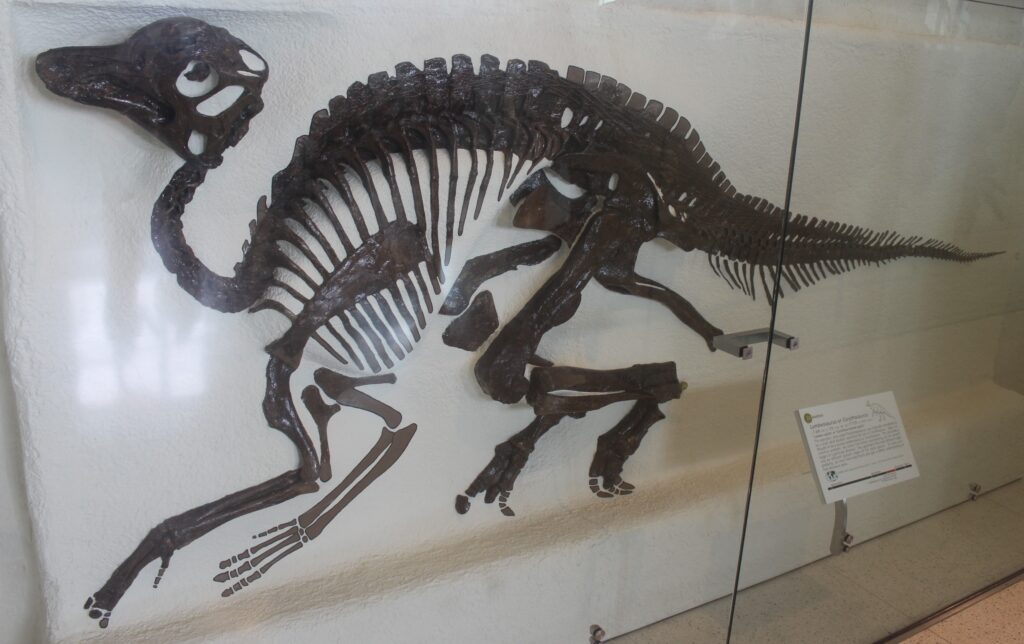
The ultimate purpose of fossil preparation is to reveal specimens that can advance scientific understanding of ancient life. Once preparation is complete, fossils become available for detailed study by research paleontologists who analyze morphology, take measurements, and compare specimens to other known examples. High-quality preparation can reveal previously unknown anatomical details that lead to the identification of new species or the revision of existing classifications. Beyond basic descriptive work, well-prepared specimens may undergo sophisticated analytical techniques such as histological analysis, which examines microscopic bone structure, or geochemical analysis that can reveal information about diet, environment, and age. The quality of preparation directly impacts the scientific value of the specimen, with expert preparation sometimes transforming seemingly unremarkable fossils into scientifically significant specimens. Many major discoveries in paleontology have occurred not in the field but in the preparation lab, as skilled technicians revealed features that changed scientific understanding.
The Art and Science Balance in Preparation

Fossil preparation exists at the fascinating intersection of rigorous science and creative artistry, requiring practitioners to balance technical precision with aesthetic sensibility. The best preparators develop an intuitive feel for fossil material that guides their hand pressure, tool selection, and approach to each specimen. This tactile sensitivity often takes years to develop, but eventually becomes second nature to experienced preparators. While scientific accuracy always takes precedence, there is undeniably an artistic element to revealing a fossil in a way that highlights its most significant features while maintaining its structural integrity. Many museum-quality specimens display not only the scientific importance of the fossil but also the artistic skill of the preparator who revealed it. This blend of science and art makes fossil preparation a unique discipline that attracts individuals with both analytical minds and creative spirits, united by their passion for bringing ancient life into focus for scientific study.
Behind the Scenes in the Fossil Lab
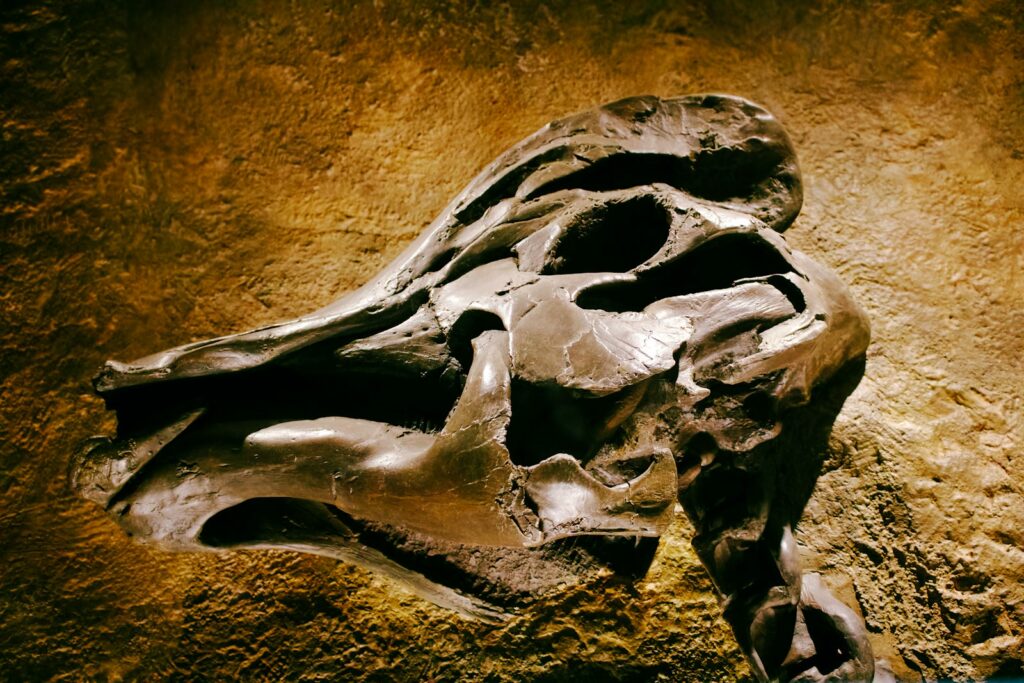
The journey from a field jacket to a research-ready fossil specimen represents one of the most critical yet often invisible aspects of paleontology. The skilled preparators who perform this work serve as essential bridges between field collection and scientific analysis, transforming rough blocks of matrix-encased bone into specimens that yield valuable scientific insights. Their combination of patience, technical skill, and scientific knowledge makes possible the discoveries that advance our understanding of Earth’s prehistoric past. Next time you admire a perfectly articulated dinosaur skeleton in a museum or read about a new fossil discovery, remember the preparators whose meticulous work behind the scenes made that scientific knowledge possible. Their laboratories truly serve as time machines where ancient lifeforms are carefully revealed, one grain of rock at a time.

